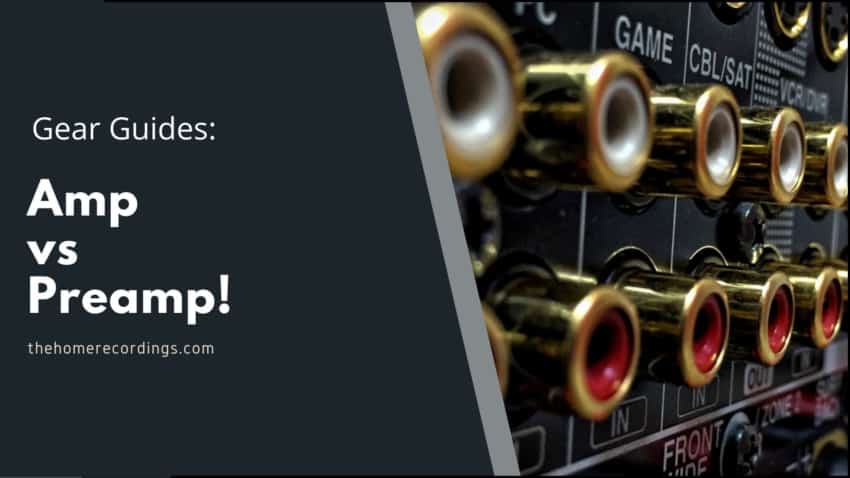I know that this topic can be confusing, and audio in general tends to be, at least at first, which is why I decided to answer a couple very common questions that I’ve been getting lately.
Preamp and Amp do have a very similar name, which is why most people tend to think that they are the same thing, but in actuality they are two different elements that are designed to work together.
In this article, I will be going over what an amplifier is, what a preamp is, the differences between the two, questions regarding headphone amps, and much more!
So, without any further delay, let’s get into the article!
What does a preamp do?
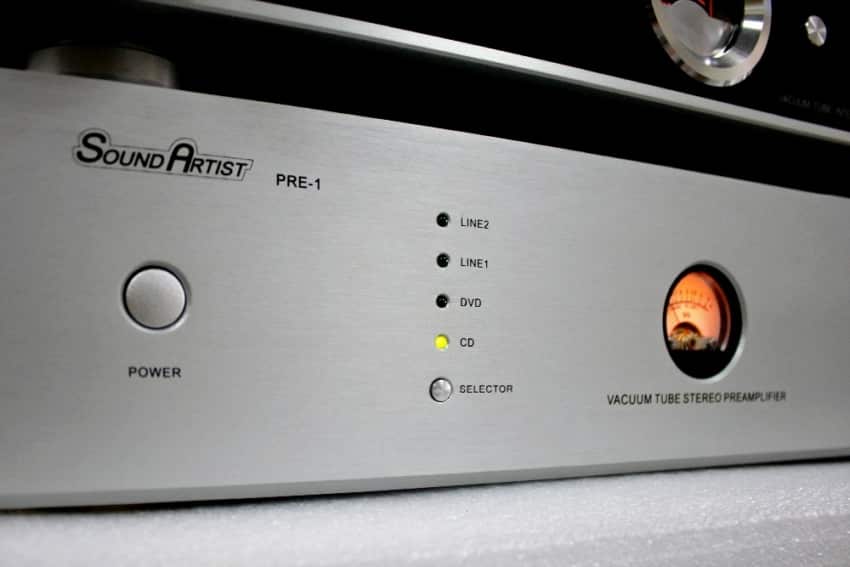
The purpose of a preamp is to amplify low level signals to “line level”, which essentially is the standard operating level of your recording gear. Microphone signals are way below that nominal operating level, so a lot of gain is required to boost the signal to line level, usually around 30-60 dB, and sometimes more.
Essentially, recording microphones will almost certainly require the use of a preamp, and in some cases, you even need a pretty powerful one, especially considering that some microphones need a lot of gain to be able to produce a good enough signal for recording (Shure SM7B comes to mind).
I wrote an entire article related to preamps, the different kinds out there and if you need one for your home studio (generally not), so feel free to check it out!
What does an amplifier do?
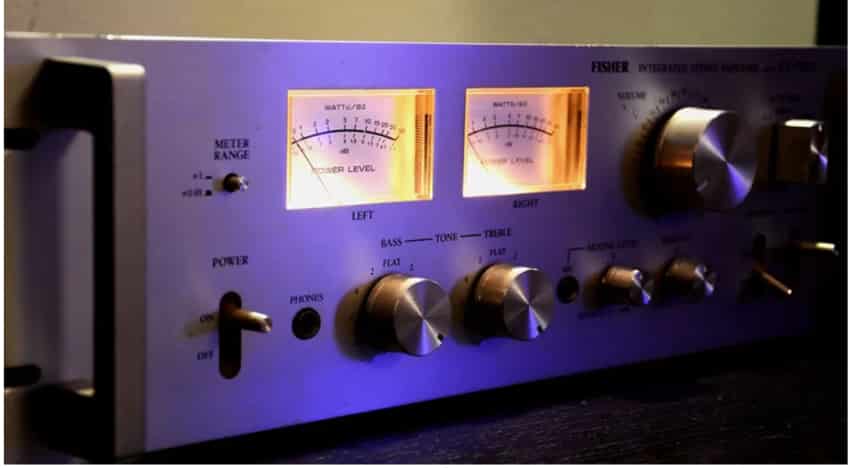
An Amplifier is a device that increases the power (voltage) of the signal from your source equipment, which is usually too low to power speakers, increasing the amplitude of the signal into one high enough to power them. The amount of amplification provided by an amplifier is measured by its gain, and the higher the gain, the more it amplifies the signal.
In short; A preamp boosts a low-level signal, generally that of a microphone, to line level, which is the standard operating level of recording equipment. An Amplifier, on the other hand, boosts that signal even more so that it can be reproduced by the speakers.
On a similar note, and this isn’t strictly related to what my blog is about but I will include it anyway since it pertains to this specific article, you may also be wondering what a receiver is and how it differs from an amp and a preamp?
Difference between amplifier and receiver
An amplifier takes an audio signal and amplifies it to a level high enough for your speakers to be able to play the audio. A receiver has an amplifier in it, but has extra functionalities and connection options such as a tuner, preamp, radio, input selection, volume controls, and more.
This question doesn’t really pertain the home recording enthusiast but rather the people who are thinking about getting an audio system for their home, home theater, etc., since you’re essentially deciding if you’re going to get a system will all of its components, such as the preamp, amp, tuner, built in or separate.
Essentially, a receiver is pretty much an amplifier that comes with some extra features and functionalities
Can a preamp be used as an amp (power speakers)?
If you read the initial part of this article, then you should already know this answer, since there’s quite an important difference between an amp and a preamp, but just to make things simple for you, here’s the answer:
A preamp works by boosting the signal of your recording equipment to “line level” so that it can be recorded properly, but the amplifier is the device that is needed to amplify the signal to a high enough level so that it can be reproduced by the speakers. Preamps alone won’t be able to power speakers.
This applies to passive speakers only, since active speakers come with built-in amplifiers, which means that an external one won’t be needed.
Can an amplifier be too powerful for speakers (Blow Speakers)?
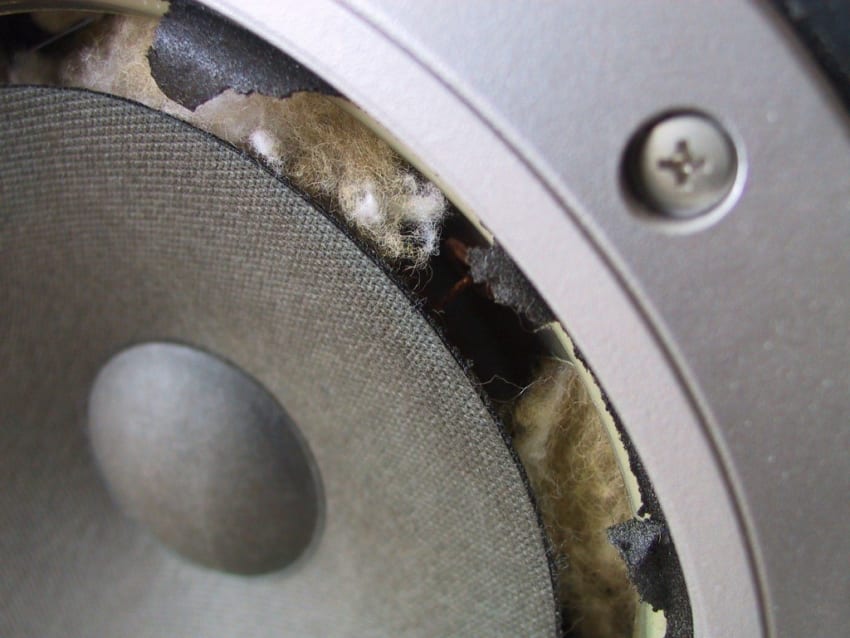
Most speaker damage occurs when the signal is “clipping”, which happens when you overdrive an underpowered amp, and this causes distortion. Essentially, an underpowered amp that is pushed too hard may damage the speakers. It’s much harder to damage a speaker when using clean power, which means that if your speakers are rated at 100 watts, a 50-watt amp has a much higher chance of damaging them than a 300-watt amp.
It’s a much safer bet to have a beast of an amp driving low-powered speakers than the other way around. A 50 watt per channel amplifier will work fine with speakers rated at 100 watts (at low volumes). However, there will be a problem if the 50-watt amplifier can’t provide enough volume, which means that it might distort and damage the speakers.
On the other hand, if you have speakers rated at 100 watts and pair them with a 300-watt amp, the amplifier will never be driven hard enough to distort the signal, which is much safer for the speakers.
Can a separate preamp be used with an integrated amp?
A preamp can be used with an integrated amp, but the integrated amp needs to be bypassed so that the signal is only affected by the external preamp, otherwise it will be processed by the two preamps, which can add noise and distortion. To do this, connect the output of the preamp to the input (main) of the amp.
Having two preamps processing the signal at the same time can cause a couple different issues;
Firstly, you’re using an external preamp because it’s supposed to sound better, right? So, why have that signal, which is supposed to be better, processed again by the inferior preamp? Makes no sense, right?
So, bypassing the integrated preamp is a must if you want to get the best audio quality possible.
Secondly, like I mentioned, there might be noise, hiss, hum, distortion, etc. introduced, so again, bypass the integrated preamp.
Can a preamp be used with an Audio Interface/Mixer?
Audio Interfaces come with built-in preamps since they need to raise the microphone’s signal to “line level”, which is the standard operating level of recording gear. External preamps can be used with Audio Interfaces, but they need to be connected to the Line inputs, generally on the back of the Interface, to bypass the Audio Interfaces’ built-in preamps.
Similar to what I just described when connecting an external preamp to an amp, when you want to connect a dedicated preamp to an audio interface, you’ll have to bypass the built-in preamps of the interface, otherwise what’s the point of using a dedicated one if you’re sending the signal of the external preamp directly into the preamp of the audio interface?
External preamps are generally used to achieve the best sound quality possible, and sending that “better-sounding” signal into the preamps of your audio interface is far from ideal.
This is why you should always bypass the preamps of your audio interface when using an external preamp.
How to Connect a Preamp to an Audio Interface/Mixer?
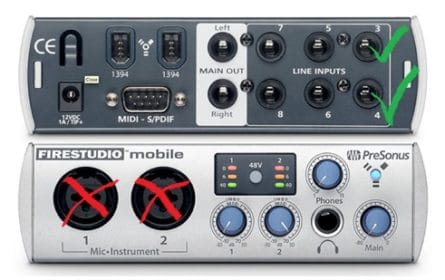
When using an external preamp, you don’t want to send that signal into the preamp of you Audio Interface since it defeats the purpose of using a dedicated one in the first place.
So, what should you do instead?…
- Connect the microphone to the XLR Input on the external Preamp.
- Connect a cable either an XLR or TRS cable to the output of the Preamp.
- That same cable should be connected to the Line inputs on the Interface or Mixer (usually on the back).
If you’re going to be doing this, then read this post on Balanced vs Unbalanced cables, since you should always use balanced ones to connect a preamp to an audio interface.
What are preamp outputs used for?
As the word implies, a preamp goes before an amp, and it’s meant to be connected to an amplifier via the outputs of the preamp. The amplifier is designed to raise the signal level so that it can drive the speakers, however, the preamp is the one that includes the volume control to adjust the volume levels of the audio. If you connect the line outputs of the preamp to the amplifier, the volume will be loud and not be able to be controlled, unless the amplifier has a volume control (not as common).
Essentially, when connecting a preamp to an amp, unless the amp has a volume control, use the “Preamp/Main Outputs” and not the “Line Outputs” unless you want the volume to be at full blast the entire time.
Can a preamp drive headphones?
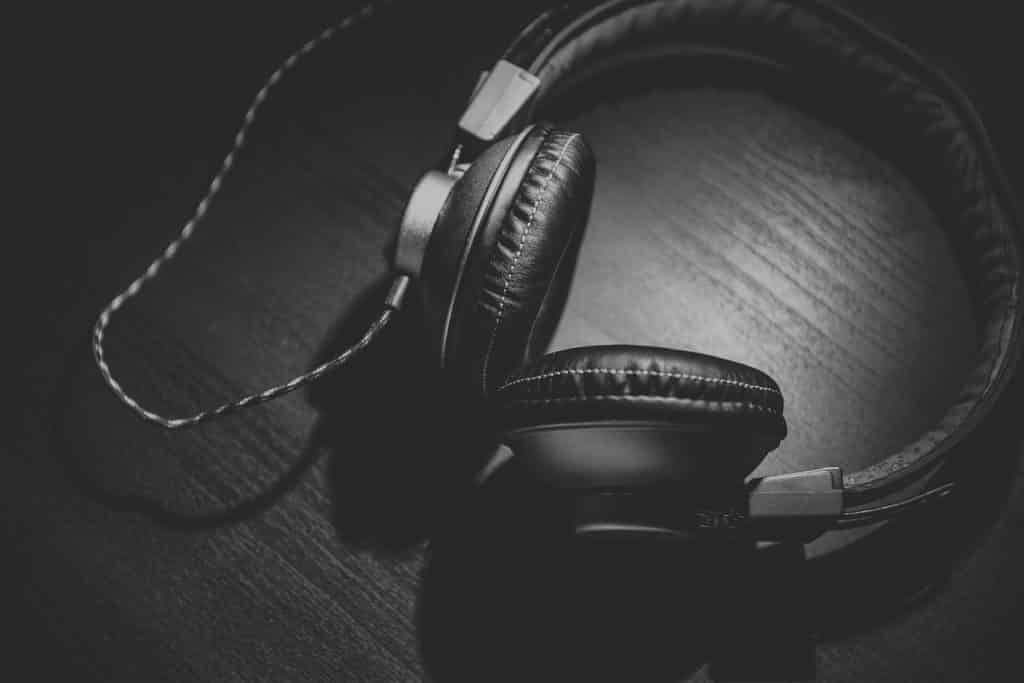
Preamps are generally not able to supply enough power to headphones to drive them properly, and this lack of voltage results in low volume levels, poor audio quality, and a poor frequency response. To drive headphones properly, you will need an amp, and the general rule-of-thumb is that the amplifier’s output impedance has to be no more than 1/8th of the headphone’s impedance (If Headphone Impedance is 32 Ohm, then the amp output impedance should be no more than 4).
While you may be able to drive some headphones with a preamp, the signal will be extremely quiet, or inaudible in some cases, but what’s even worse is that the frequency response will be all over the place.
See, when a manufacturer rates their headphones as a single Impedance value, this isn’t totally accurate, since the impedance value of headphones varies depending on the frequency.
Example: at 150Hz, a headphone might have an impedance of 60 Ohm, but at 2k only 45 Ohm.
This will yield a completely inaccurate frequency response because there will be variable volume levels at different frequencies.
Basically, if you want to have the best results possible, go with a headphone amp (could be the one built into an Audio Interface, Mixer, etc.).
On a similar note, here’s another common question I see being asked:
Can a headphone amp be used as a preamp?
Headphone amps are used specifically to boost the signal of a sound source to a high enough level so that it can drive the speakers inside of the headphones. Essentially, a headphone amp has a built-in preamp as well, and driving a higher impedance load won’t be an issue since it’s designed to do that.
Conclusion
I know this ended up being more of a FAQs article where I answer a lot of questions related to amps and preamps, so I hope you found all the info helpful.
If there’s some other question you might have that I didn’t answer in this post, feel free to leave a comment below!
Thanks and I hope to see you around!
